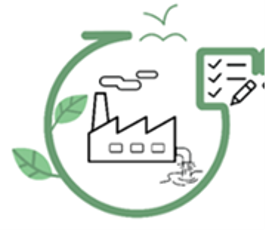Life Profile

The aim of the Life Profile project is to improve financial security provisions for Environmental Liability Directive (ELD Annex III) activities through the implementation of environmental risk assessment. Based on this assessment, financial security instruments will be produced or further elaborated in order to detect, prevent & remediate environmental damage. The main objectives are:
- Strengthen the prevention of environmental damage, the polluter pays principle & ELD implementation & Improve remediation of land, water & natural habitats & protected species from environmental damages timely & effectively
- Develop, adopt & implement a national plan providing guidelines & practices for a more effective ELD application, focusing on risk assessment & financial security, taking into account market trends
- Evaluate existing national legislation on ELD, strengthen cooperation and networking among national and regional competent authorities on ELD as well as stakeholders (operators, financial security providers, NGOs) & adopt necessary improvements for reliable financial security availability
- Develop & test risk assessment for identifying & quantifying risk assessment scenarios for ELD Annex III activities that may cause environmental damage, covering their extent & diversity, specially focusing on biodiversity, building on IMPEL & other MS experience
- Increase nationwide application of financial security instruments ensuring reliable coverage of remediation costs for each sector of activity
- Assist operators to fulfill their obligations deriving from ELD, through the gradual application of user-friendly financial security schemes, so as to upgrade their environmental performance & promote their export capabilities within the green procurement framework.
- Raise awareness of stakeholders and NGOs on ELD and broaden their involvement in policy consultation in order to improve environmental governance
- Provide scientific basis, through the risk assessment exercises to be conducted in order to assist actual implementation gradually, document realistic ceilings for the financial guarantees and facilitate the creation of financial security market which shall provide coverage at reasonable costs
- Develop & widen the existing financial provision market & achieve socio-economic improvements, job creation in the technical, auditing, consultancy & financial sectors
- Demonstrate to other MS with similar issues, the applicability of the tool, strengthening financial security under ELD
The main role of the Institute of Urban Environment and Human Resources (UEHR) in Life Profile is to evaluate the cost of an environmental event/accident from specific activities. The economic assessment will consider the causes of the environmental damage, the type of damage (soil, water, natural habitats, and protected species), the spatial dimension, the duration, the severity (and the reversibility or not) of the damage. To this end, ecosystem services and environmental goods that may be affected, as well as critical biological-ecological boundaries based on selected ecological indicators will be examined. At the same time, examples (studies/applications) from the international practice will be examined and analyzed: (1) in terms of the cost of rehabilitation of the selected accidents / events, (2) in terms of the environmental costs of corresponding accidents / events. Emphasis will be placed on the impact on biodiversity and protected areas of the country. The results that will derived from the above process will be integrated in the IT-Tool that will be developed in the framework of the program for the assessment of the environmental risk. At the same time, UEHR will use questionnaire research tools and / or focus groups in three distinct stages of the program: (a) in the preparatory phase of the program to explore the views and attitudes of the three main stakeholders of the program (companies, insurance companies, insurance intermediaries) on issues related to the use of financial security as a means of protection against environmental risk; (b) in the economic valuation of ecosystem services for selected key-species ; and (c) in the economic evaluation phase of the program, in order to assess the socio-economic impact of the use of financial collateral instruments/products to cover environmental liability.
